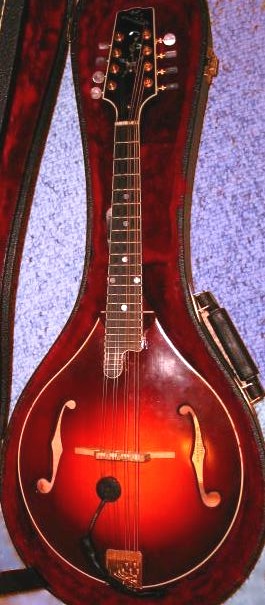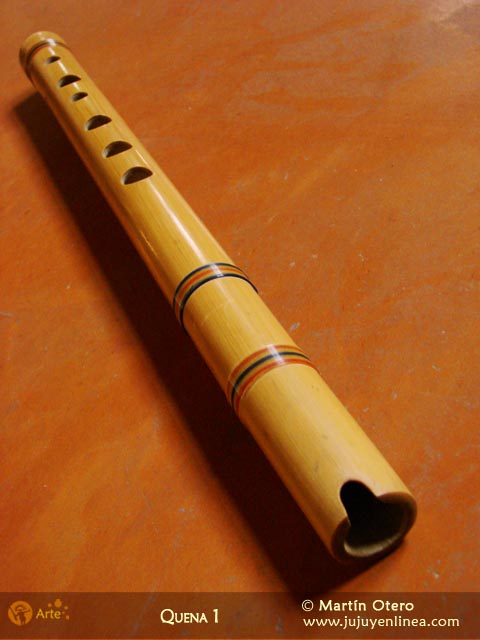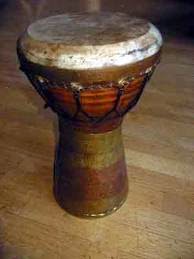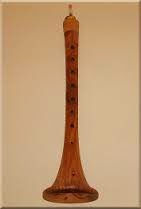AFRICAN MUSIC.
- General description of the chosen country or continent:
- Population: Africa is the second-largest and second most populous continent on earth with an estimated population in 2013 of 1033 billion people.
- Size: It has an area of 30,221,532 km2
- Tipe of predominant economic activity: Agriculture has long been the mainstay of Africa´s economy, subsistence farming being the prevailing type. It was not until the colonial period that commercial farming and mining were introduced. Under European control, Africa became a source of agricultural and mineral raw materials.
- Another important element: Africa mainly lies within the intertropical zone between the Tropic of Cancer and the Tropic of Capricorn. Only the northernost most fringes of the continent have a Mediterraneam climate because they aren´t located under the tropics, so Africa is a hot continent as the solar radiation intensity is always high

2.Brief overview about the music in the corresponding culture.
- Scales: Chords are made from scales. Pentatonic and hexatonic scales are very common scales across Africa.
- Intervals: African musical instruments and vocal resources are organised in sonic time pattern that distinghuish their idioms from those of other world regions, through the varius scales, melody patterns, transitions of pitch clustering, and concurrent pitch lines and rhythm.
- African music has a collective perfomance.
- African music does not feauture harmony.
- African songs usually have several melodies, performed at the same time, and it used poli-rhythm.
3. Main instruments of African music:
- Photos:
Sanza: Balafon:
Shakers: Ivory Horn:


Talking drums: Lute:


- Videos about african music:
The Balophon: is a kind of wooden xylophone or percussion idiophone which plays melodic tunes and usually has between 16 to 27 keys which has been played in the region
The talking drums: The talking drums is an instrument from West Africa, whose pitch can be regulated to mimic the tone and prosody of human speech.
4.Musical genres: The music of Africa is as vast and varied as the many regions, nations and ethnic groups of the continent. Although there is no distinctly pan-African music, there are common forms of musical expression, especially within regions.
- Categories:
CHINESE MUSIC
- Description:

- Capital city: Beijing
- Size:China contains a land area of 9,596,960 square kilometers.
-Type of activity predominant economic activity:
The economy of china is the word´s second largest economy by nominal GDP.
·sector of the economic:
Primario: 9,6%
Secundario: 46,9%
Servicios:43,4%
Desempleados: 4,6 %
-Important elements:
Culture.
There are more than fifty ethnic groups, each one with its own spoken language and customs.
Tradicional festivitis.
-The Spring Festival: This celebration begins on the first day of the first lunar month.
-The Winter Solstice Festival: This festival is an analogy to the Christmas festivities.
-The Lantern Festival: the people light lanterns in order to show respect to Buddha.
- Overview about the music:
·Pentatonic scale: A pentatonic scale is a musical scale or mode with five notes per octave.
·Almost total lack of harmony.
·Doesn't used syncopation very much.
- Instruments:
PLUCKED STRING:
-Pipa.
-Sanxian.
-Zhong Ruan.
WOODWIND:
-Sheng.
-Xiao.
-Dizi.
PERCUSSION:
-Campana pagoda chung.
-Caja china.
-Gong.
Musical genres :
MODERN MUSIC:
-Popular music.
-Rock and heavy metal.
NATIONAL MUSIC:
-Patriotic Music: The cantata was adapted to piano concerts.
-Patriotic Music: The cantata was adapted to piano concerts.
TRADICIONAL MUSIC:
-Chinese Opera
-Folk Music.
-Folk Music.
1.1. Population: It has got 500.700.746 people.
1.2. Language: The most language spoken is the Arabian and the vernacular language of the arabian people in diaspora includes: French, Spanish, English, Portuguese and Hebrew.
1.3. Religion: the Islam is the religion predominant in the Arab world, the 90% of the population are Muslim.
1.4. Size: 13,333,296 km squared.
1.5. Economic activity: the petroleum and natural gas are the main source of income and the essential component of its GDP (Gross Domestic Product) until put him at the same level of the developes countries.
2. Brief about de music.
Arabic music has a chromatic scale
Secular genres include maqam al-iraqi, andalusi nubah, muwashshah, Fjiri songs, qasidah, layali, mawwal, taqsim, bashraf, sama'i, tahmilah, dulab, sawt, and liwa
Sacred Music: Arabic religious music includes Jewish, Christian, and Islamic music
Much Arabic music, is characterized by an emphasis on melody and rhythm, as opposed to harmony. There are some genres of Arabic music that are polyphonic, but typically, Arabic music is homophonic.
"three components" that characterize Arabic music:
a) The Arab tone system; that is, a musical tuning system that relies on specific interval structures
b) Rhythmic-temporal structures that produce a rich variety of rhythmic patterns
c) A number of Musical instruments that are found throughout the Arab world that represent a standardized tone system
Maqam system
A Maqam tone level example
Though it would be incorrect to call it a modal, for the Arabic system is more complex than that of the Greek modes, the basis of Arabic music is the maqam,which looks like the mode, but is not quite the same. The tonic note, dominant note, and ending note (unless modulation occurs) are generally determined by the maqam used.
The maqam consists of at least two jins, or scale segments. "Jins" in Arabic comes from the ancient Latin word "genus," meaning type.
More notes used than in Western scale
The main difference between the Western chromatic scale and the Arabic scales is the existence of many in-between notes, which are sometimes referred to as quarter tones, for the sake of simplicity.
Arab classical music is known for its famed virtuoso singers, who sing long, elaborately ornamented, melismatic tunes, and are known for driving audiences into ecstasy.
3.Instruments:
Qanoon
Riq
Oud Darbuka
-Videos about the Arab instruments
4. Musical genres,singing,dancing:
Vocal traditions
Arab classical music is known for its famed virtuoso singers, who sing long, elaborately ornamented, melismatic tunes, and are known for driving audiences into ecstasy.
Belly dance or bellydance is a Western-coined name for "solo, improvised dances based on torso articulation" and takes many different forms depending on the country and region, both in costume and dance style, and new styles have evolved in the West as its popularity has spread globally.
Pop music
Arabic pop music or Arab pop is a subgenre of Pop music and Arabic music
Stylistic origins: Arabic music, traditional pop music.
Cultural origins: 1970's for most of the Arab World.
Typical instruments: Electric guitar, Bass guitar, Keyboard, Synthesizer, Turntable, Drum machine.
• GENERAL DESCRIPTION
- Latin American has got a population of 605.353.428 people.
- There are twenty five countries, amomg them: Argentina, Bolivia, Brasil, Chile, Colombia, Ecuador, Guyana...
- Here predominant economic activity are industrial composition and productive of the economics exporter of latin american are, the extraction of naturals resources, chiefly the miner industry and oil company, manufacture and agricultural.
- Latin American is very big ( 22.222.000 km²).
- Income from tourism is key to the economy of several Latin American countries.Thanks to its proximity to the USA, Mexico receives the largest number of international tourists, with 22.3 million visitors in 2010, followed by Argentina, with 5.2 million in 2010; Brazil, with 5.1 million; Puerto Rico, with 3.6 million, Chile with 2.7 million, Colombia with 2.385 million; Dominican Republic, with 4.1 million and Panama with 2.06 million.

• OVERVIEW ABOUT THE MUSIC
- The characteristics of this music are modal and tonal melodies, symmetric melodic contours, tonal harmony, sectional formal structures and particular types of ensemble combination and arrangements.
- The syncopation is a musical rhythm in which stress is given to the weak beats instead of the strong beats.
• INSTRUMENTS
- Stringed instruments:
Guitar Charango
Charango

 Charango
Charango

Cuatro Violin
Violin
 Violin
Violin
- Wind instruments:
Panpipe Flutes
Flutes Ocarina
Ocarina 
 Flutes
Flutes Ocarina
Ocarina 
Bandoneon Quena
Quena

- Percussion instruments:
Drums Maracas
Maracas 
 Maracas
Maracas 
Bongos  Cuban güiro
Cuban güiro
 Cuban güiro
Cuban güiro
• GENRES, SINGING, DANCING
- Argentina (Tango): is a parnet dance that originated in the 1890s along the Rio de la Plata, the natural border between Uruguay and Argentina, and soon spread to the rest of the world. The styles are mostly danced in either open embrace, where lead and follow have space between their bodies, or close embrace, where the lead and follow connect either chest-to-chest.
- Bolivia and Chile (Cueca): In Chile, the cueca holds the status of national dance, where it was officially selected on September 18, 1979.While its origins are not clearly defined, it is considered to have mostly European Spanish and arguably Indigenous influences.
- Colombia (Cumbia): it is a music genre popular throughout Latin America. Cumbia began as a courtship dance practiced among the African population, which was later mixed with Ameridian steps and European and African instruments and musical characteristics.
- Ecuador (Pasillo): it is a South American genre of music extremely popular in the territories of the "Gran Colombia" in the 19th century. Ecuadorian pasillo is slow and melancholic.
- Peru (Huayno): it is a genre of popular Andrean Music and dance originally from Serrania, Peru. The history of huayno dates back to the colonial Peru as a combination of traditional rural folk music and popular urban dance music.
- Venezuela (Joropo): it is a musical style resembling the waltz, and an accompanying dance, having African and European influences originated in Venezuela. In 1882 it became Venezuela's national dance.



















No hay comentarios:
Publicar un comentario